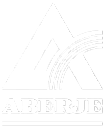Managing multi-generational teams is becoming increasingly important in today’s corporate environment. With Baby Boomers, Generation X, Millennials, and Generation Z all working together, it’s inevitable that challenges will arise around communication, expectations, and values. However, when managed effectively, these differences can fuel creative solutions and innovations that drive organizational growth.
To start, it’s essential to break down the stereotypes associated with each generation. Every employee brings unique experiences and perspectives, and successful integration comes from recognizing and valuing these contributions. Companies that promote intergenerational knowledge transfer—through mentoring programs and collaborative projects—foster a culture of continuous learning.
Furthermore, communication should be tailored to each generation’s preferences— whether it’s formal communication via email or quicker, more direct methods like messaging apps.
Creating a flexible work environment that accommodates the specific needs of each generation is also crucial. Initiatives like flexible working hours, remote work options, and wellness programs can address the diverse needs of employees at different stages of life.
Finally, active listening should be a cornerstone of people management. By attentively listening to employees across all age groups and adjusting company policies to meet their expectations, organizations not only promote inclusion but also strengthen engagement and retention of talent.







